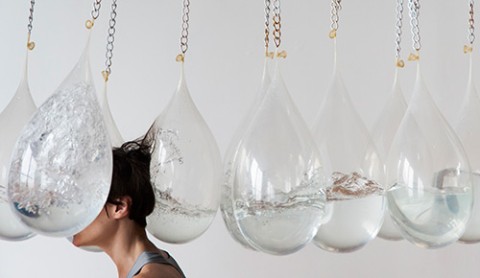While working for esteemed artists and designers that include Marc Jacobs, Nick Cave, and Helmut Lang, Cheryl Pope developed a practice that reflects her wide-ranging approach to artmaking. Nonetheless, her work often incorporates symbolic objects and consistently monumentalizes the struggles we face as individuals and members of society.
Pope lives and works in Chicago, and received her BFA and MFA in design from the School of the Art Institute of Chicago. The city has had a profound impact on her art, particularly in recent years as the number of gun-related deaths has risen to alarming heights. Many of the victims are teenagers, whose ordinary struggles of adolescence have been compounded by the extraordinary struggles of their environment.
In an effort to raise awareness and engage her community through her work, Pope collaborated with numerous high school students to produce art that both honors and protests their experiences. Remember to Remember (2012) holds 178 brass nameplates in a display case similar to the ones found on the walls of high schools. The tags are engraved with the names of teenagers who were killed between 2011 and 2013; however, Pope also ominously leaves room for more names, suggesting that the work will remain unfinished as the death count continues to rise. Rather than celebrating the accomplishments of individuals, the plates memorialize a society's collective failure to protect its children.
Likewise, A Silent I (2012) employs the banners that typically announce a school's sports victories to present aspects of students' identities to an unsuspecting audience. Pope asked several students to submit one truth and one lie about themselves. She selected her favorites and, without revealing which were true or false, she embroidered banners with the quotations and hung them above and around the gymnasium at Lindblom Academy. Instead of championship titles, guests encountered proclamations that included "I am gay," "I have anger management issues," "I always do the right thing," and "I hate my father for not being there." Instead of presenting the institution’s one-sided image, Pope's installation offered a true (and false) representation of the student body.
Pope also featured commemorative objects in unexpected ways for a series of works in her 2011 Matter of Fact exhibition. In video, sculpture, performance, and installation, she used fine china—a classic wedding gift and symbol of matrimony and domesticity—in potentially harmful and precarious ways. One such work, Stacks (2011), is a videotaped performance of an anonymous woman as she attempts and fails to stack several dishes without breaking them. The related live performance, Balancing Stacks (2011), featured another woman stacking dishes on a precariously balanced table. Like the feminization of such rituals as setting and clearing tables, Pope sees her stacks destined to collapse.
For another perilous presentation entitled Thresh (2011), Pope installed a sculpture of a pair of feet facing a path made from shards of broken dishes. The work suggests that carrying someone over the threshold invites pain and injury. Tops (2012) also features sculptures made from broken pieces of vintage china; however, these resemble children's spinning toys. Despite the regeneration of the dishes, each piece suggests its own potential for destruction. The plates are no longer symbols of socio-economical status or cultural customs. Instead, they are transformed into objects in which their literal and formal instability impresses upon the instability of their previous associations.
Not content to let us only imagine the destruction of her media, Pope allows us to witness it in her video Up Against (2012). A still camera reveals several transparent, water-filled balloons hanging from partially whitened chains. Pope's head soon enters the frame at the level at which the balloons hang, and she proceeds to bang "up against" the objects in an effort to break and burst them apart. The initially tranquil and delicate setting quickly becomes one of violent and explosive gestures. As the shape of the balloons resembles heads, the performance in Up Against seems to portray an interpersonal struggle, and the anguished yet determined look on Pope's face echoes the paradoxical nature of such a dilemma. Because each contact Pope makes has a rippling effect, the scene suggests that her actions are never done in isolation. Her aggression affects the other figures and eventually it comes back to her. On the other hand, Pope views the performance as a way of "clearing the air." Indeed, by the end of the video heavy weights have been lifted, and she has broken the balloons free from the chains. Ultimately, with Up Against Pope demonstrates how one must "face" certain obstacles and confront situations "head on"—as painful as that might be to do . . . and watch. _—Kanitra Fletcher_

